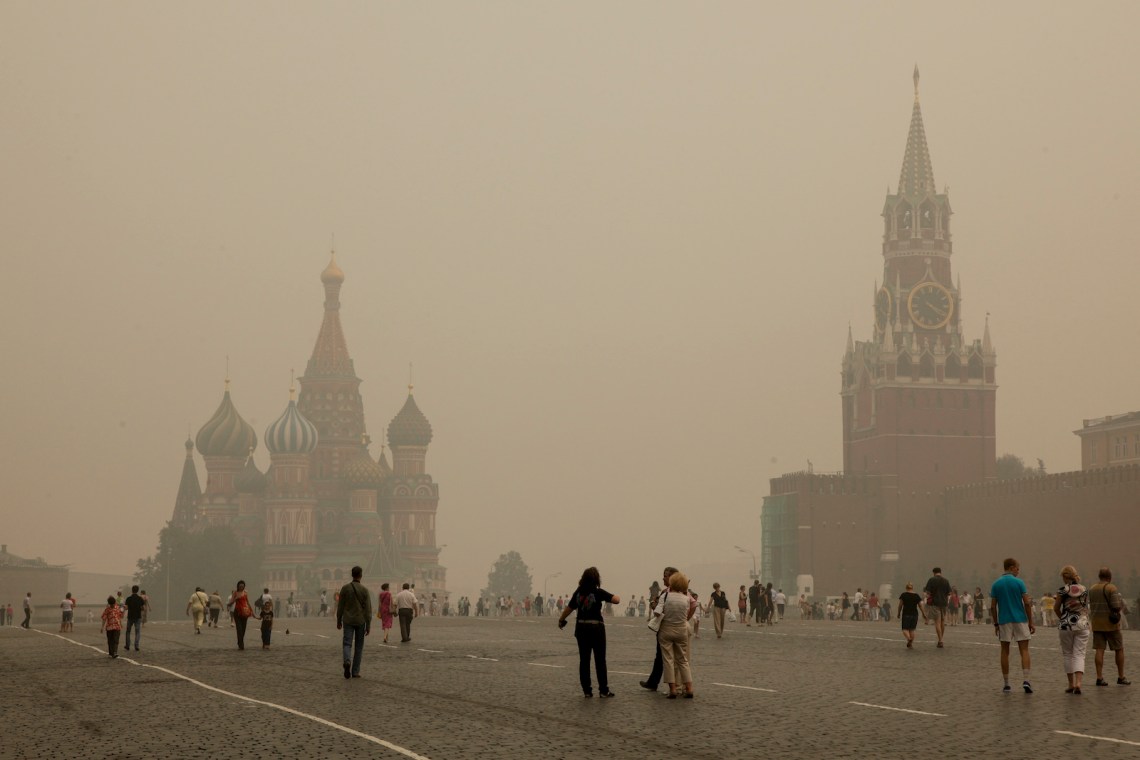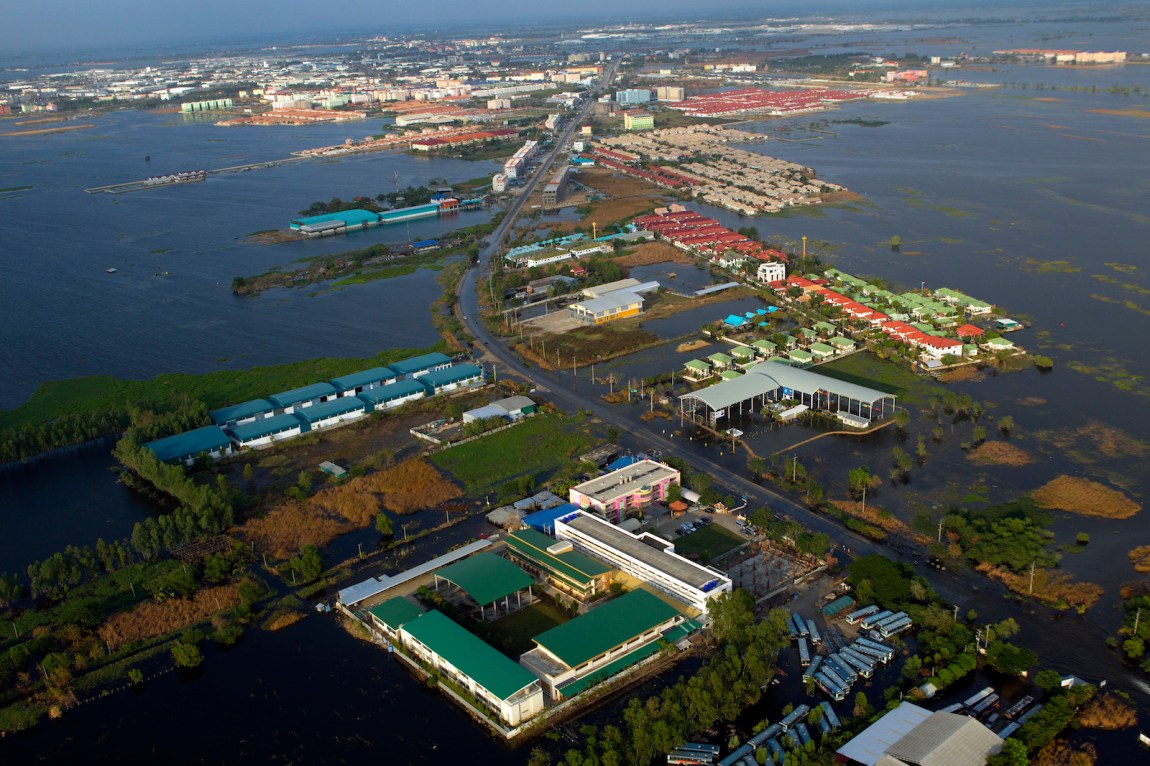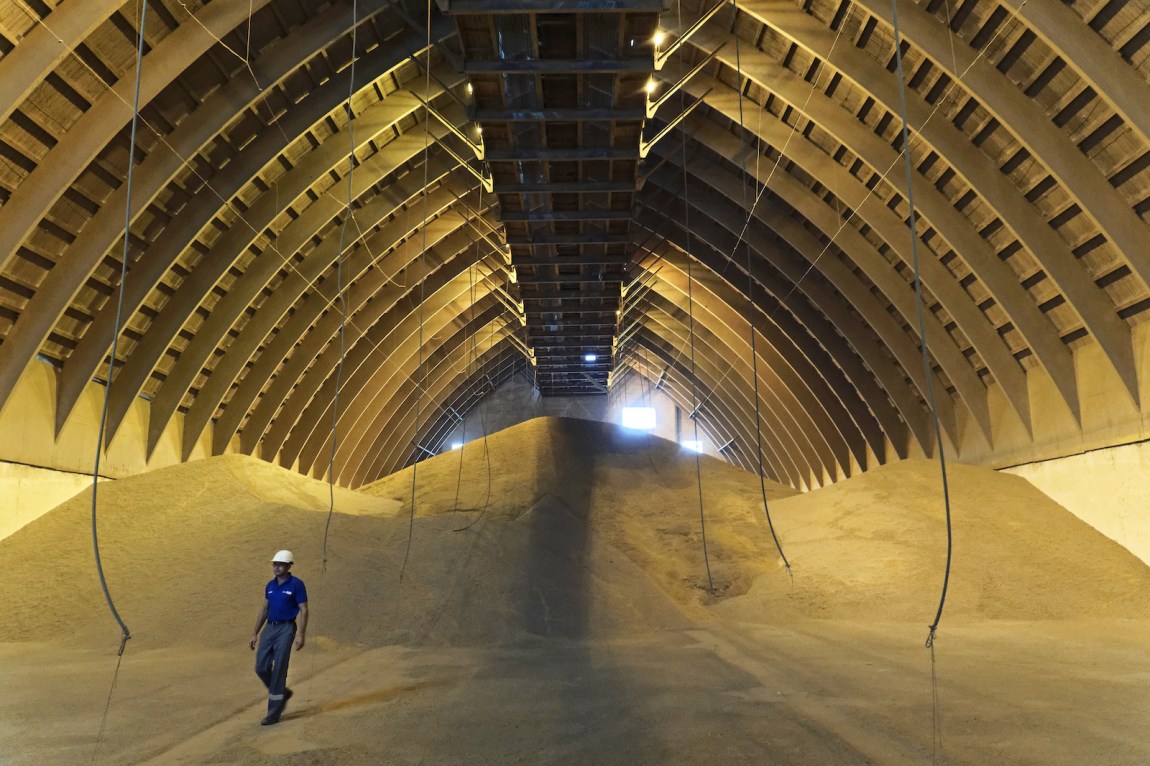In 2010, a severe drought and heat wave struck western Russia and eastern Europe. Temperatures soared as wildfires tore across the region, darkening the skies over Moscow and lofting radioactive dust into the atmosphere near Chernobyl, in Ukraine. The fires overwhelmed Russian crews; at least a dozen other nations came to Russia’s aid with firefighters and material assistance, including Ukraine. By October, more than 55,000 Russians had died from exposure to excessive heat and air pollution from the wildfires. It was one of the most severe heat events on record—one that researchers would later conclude was made much more likely by climate change.
On February 28 this year, just four days after Vladimir Putin sent his army to assault Ukraine, the Intergovernmental Panel on Climate Change (IPCC) released the latest report from its Sixth Assessment. Understandably, the outbreak of war in Europe quickly pushed the report out of the headlines. The drumbeat of bad climate news is now numbingly familiar. What news could yet another massive IPCC report possibly contain? As it turns out, this long, arid, densely technical report from the IPCC’s Working Group II, written by committees of 270 authors from sixty-seven different countries, happens to be the most suspense-filled document in human history. As the climate activist Greta Thunberg observed in a tweet: “Literally everything is at stake.”
The 2010 Russian heatwave was the type of “extreme weather event” that the IPCC authors label a “Reason for Concern,” or, in the characteristically bloodless language of the report, “RFC.” Drawing on more than 34,000 published studies, the authors have sorted “127 different regional and global risks” into five different categories of RFCs, which include “unique and threatened ecosystems” (bleached coral reefs and vanishing alpine glaciers) and “large-scale singular events” (the collapse of West Antarctic ice sheets, or the Amazon’s turning into a savannah). The increasing probability of these world-altering eventualities is, to say the least, concerning. But the reader who can push past the report’s intentionally anodyne language and overcrowded figures will find a litany of smaller, more viscerally imaginable horrors across its 3,675 carefully vetted pages. Full of possible futures spidering out in all directions, it can be read as a sort of choose-your-own-adventure Silent Spring, or, as United Nations secretary-general António Guterres aptly said on the day of its release, “an atlas of human suffering.”
Some of that suffering is happening right now: nearly half of the world’s population already experiences extended water shortage each year. Some of it is yet to occur, but is already locked in: by 2050, a billion people will be at direct risk of coastal flooding where they live, thanks to sea-level rise. What’s new in this report is both the higher level of “confidence” about what’s likely to happen as the world warms further, and the granularity of those scenarios. It is as though scientists have acquired much more powerful camera lenses in the six years since the last IPCC assessment. They offer high-resolution glimpses of how the natural and physical world we inhabit is, in effect, shrinking and emptying, becoming more chaotic and less abundant—and less recognizable.
One astonishing revelation: half of all species on the planet are shifting toward the poles or to higher elevations on land. This will have consequences we can barely intuit today, but one of them, treated at length in the document, is that the ranges of tuna, mackerel, herring and other fish are moving away from the tropics, changing the outlines of traditional fisheries and the nutritional prospects for billions who depend on them for protein.
Infectious diseases are on the move, too. We can expect more malaria in the higher, cooler parts of Africa and South America, where historically mosquitoes have not thrived; more Lyme disease moving northward on ticks throughout North America; more dengue, chikungunya and West Nile virus spreading through southern Europe. Pests and pathogens that attack tree crops, grains, and vegetables are also claiming new territory. They, too, are marching poleward, at the average rate of 2.7 kilometers per year.
Meanwhile, the ranges in which certain crucial staple food crops can be grown is gradually shifting, along with rising temperatures and changing precipitation patterns. By 2100, we can expect to lose anywhere from 8 to 30 percent—depending on how much more warming we permit to unfold—of the land currently used for agriculture and raising livestock. That’s roughly a tenth to a third of global farmland taken offline, rendered “climatically unsuitable.”
Reading these scenarios, page after page, can induce a kind of claustrophobia: the sense of there being nowhere to hide from these quietly cascading risks, of being squeezed, of running out of room as the familiar ranges of animals, plants, forests, and temperature zones conducive to human comfort all shift dramatically.
Advertisement
Much of the report is devoted to outlining the harm that might be avoided through timely and carefully planned adaptation. But, as the report also notes, there are some hard limits to the kinds of physical changes to which humans and other species can adapt. Three degrees of warming—which we are currently on track for, barring more serious action to cut emissions—would represent such a threshold, in terms of extreme heat. There’s only so much heat the human body can handle before vital organs fail. Residents in most parts of the world can look forward to more summer days on which it will be dangerous to be in the sun or even working outside. Temperate zones won’t be spared. Europeans can expect 90,000 annual heat deaths by 2100, if the world warms by three degrees—triple the toll expected at 1.5 degrees.
Another hard limit looms for species in polar regions or mountain zones that are physiologically not capable of adapting to warmer temperatures, and for which there is no margin to migrate poleward or upward in elevation. They will simply run out of “climate space”—that is, go extinct. Beyond two degrees of warming, the likelihood of both major biome shifts and species extinctions increases. Right now, a best-case warming scenario (staying at 1.5 degrees) has nine percent of all terrestrial and freshwater species at very high risk of extinction; but if the world reaches three degrees, the IPCC estimates the upper bound could be as much as 29 percent.
In a three-degrees-warmer world, pollinators such as bees are among the species most threatened. In a hotter world, the overlap between pollinators’ window of activity and the flowering times of plants (when pollen is produced) is likely to be thrown out of sync, to the detriment of both. Bees may hum quietly in the background of our other, louder reasons for concern, but declines of this magnitude will not go unnoticed. They will show up on the price stickers on supermarket produce, and in statistics of mortality from malnutrition. The IPCC cites an estimate that “complete removal of pollinators could reduce global fruit supply by 23 percent, vegetables by 16 percent, and nuts and seeds by 22 percent, leading to significant increases in nutrient-deficient population and malnutrition-related diseases.”
The threats to the global food system in particular are manifold. Drought, pests, extreme weather, floods, and heatwaves can cause lost harvests that reverberate through global supply chains. One of the report’s many unsurprising but still alarming conclusions is that climate change is already slowing down growth in agricultural productivity. Since 1960, crop yields per acre have nearly tripled, thanks to mechanization and other modern farming techniques (plant breeding, fertilizers, irrigation systems, pest control). That trend is now on the wane. Climate change has likely reduced growth in agricultural productivity in North America by 12 percent since 1961; in Africa, it has slowed growth by 34 percent.
Climate change is already functioning as an accelerant of inequality, eroding some countries’ capacity to pull their people out of poverty. Hotter temperatures and failing rains have reduced the per capita GDP of African countries by 13.6 percent between 1991 and 2010, widening the gap between the world’s poorer and richer nations. If we surpass two degrees of warming, crop yields across Africa will actually start to backslide.
*
As discouraging as those declining long-term averages are, one of the report’s most urgent messages is: fear the extremes. Low-probability, extreme events with potential “cascading downstream effects” that spill across the borders of nations and ecosystems are becoming less improbable. Chapter 16 includes an infographic detailing the global economic fallout from flooding in Thailand in 2011, one of the recent disasters that should serve as premonitions. Those floods killed 813 people. They also disrupted Thailand’s production of semiconductors and other vital products for the automotive and electronics industries in the US, Europe, and Japan. This led to major manufacturing delays for US automakers and drove up the price of computer hard disk drives worldwide.
A shock to the supply of electronics components is no doubt a serious thing, damaging the livelihoods of many. But a shock to the global food system is something else entirely. Consider the prospect of what the report calls “multiple breadbasket failure.” Breadbaskets of the world, from Australia to Argentina, are becoming more vulnerable to hits from multiple shocks at once: pests, drought, extreme heat. An extreme weather event in one part of the world can ripple outward, affecting the availability of food staples in distant lands; climate-driven disruptions to come will likely make us nostalgic for the Covid pandemic’s mild rattling of global supply chains. In 2007 and 2008, grain output was low in Russia, while Australia was in the grips of its own severe drought and prolonged heatwave. The result was protests over the price of bread in forty countries.
Advertisement
Notably, Ukraine and Russia together form one of the world’s great breadbaskets, accounting for a quarter of global wheat production. Ukraine alone is one of the world’s leading exporters of sunflower oil, and is the third-biggest exporter of corn and wheat. During the extreme summer of 2010, both countries’ agricultural sectors suffered heavily. The drought led the Russian government, worried about feeding its own citizens, to ban wheat exports. Ukraine also limited its exports of wheat and maize because of crop losses. The resulting supply shock contributed to a 27 percent jump in global wheat prices. The consequent spike in food prices in Egypt, which relies heavily on those two countries for grain imports, helped fan the flames of unrest that eventually toppled President Hosni Mubarak from his three decades-long grip on power in 2011.
The extent of the vulnerability of global grain supply chains is being revealed right now. One prominent agricultural economist predicted that Russia’s war would “cause the biggest supply shock to global grain markets in my lifetime.” This year’s planting in Ukraine is sure to be disrupted by the current conflict and by interruptions in the supply of fertilizer and other resources from Russia. Turkey, Egypt, and Sudan are among the many countries dependent on Russian and Ukrainian wheat. Before the Russian invasion, the World Food Programme purchased half of its wheat from Ukraine, according to its executive director, David Beasley. “This breadbasket helps us feed the world,” he said, in an appeal-cum-warning. “Yemen, Ethiopia, Syria, and I could go on and on.”
Global supply chains and commodity markets are complex. But the consequences of the looming surge in the price of wheat and other commodity grains are simple: more people suffering from hunger, more poverty, more political discontent.
*
Perhaps even more unsettling than any of the particular Reasons for Concern or individual impacts outlined in the report is the fact that most of them are arriving much faster than expected. Scientists seem particularly spooked by the speed with which ocean species are departing for the poles, leaving a “biodiversity valley” near the equator, and by the rates at which the poles are changing, too. Arctic permafrost is thawing and Antarctic ice shelves are thinning well ahead of schedule.
Every day’s added dump of greenhouse gas emissions speeds us further toward these irreversible, predictably catastrophic shifts in systems that underpin a stable climate. Our atmosphere is “on steroids, doped with fossil fuels,” as one of the report’s lead authors put it, and we are accelerating into a dark, chaotic future. “Any further delay in concerted anticipatory global action on adaptation and mitigation will miss a brief and rapidly closing window of opportunity to secure a livable and sustainable future for all,” the authors conclude in their summary for policymakers.
In April, the next installment of the Sixth Assessment report will come out. That one will be focused on mitigation. It will be jam-packed with ways to cut emissions, but we know its clarion call already: humanity’s future is being ransacked by our continued reliance on burning oil, gas, and coal, and the world needs to transition toward clean energy as fast as it can.
The policy response ever since the IPCC released its first report thirty-two years ago has been frustratingly feeble. But leaders can move quickly and decisively when they want to. Witness the dizzying speed of moves to isolate Russia economically in the past week. Measures that were not long ago deemed unthinkable—a boycott of Russian oil and gas, financial sanctions on its central reserve bank—have seen consensus action. The EU Commission just announced plans to cut its imports of Russian natural gas by 65 percent this year, and to rapidly scale up renewable energy and energy efficiency.
Like a flood-swelled river jumping its banks and creating a new channel, the fallout of the war against Ukraine could influence energy investment choices that will shape societies for decades to come, just as Putin’s invasion has re-engineered the global post-cold war security order almost overnight. The question is whether nations will take this opportunity to go renewable, or go backward by boosting their own oil and gas production. The confused clamor from certain quarters to revive the Keystone-XL pipeline in response, for instance, is unsurprising, but it threatens to drown out saner voices.
If the IPCC’s latest warning could be reduced to any single dictum, it’s that doubling down on fossil energy would be a grave mistake. Last week, as bombs started to rain down on Kyiv, Ukraine’s delegate to the IPCC, meteorologist and climatologist Svitlana Krakovska, expressed her hope that her nation’s tragedy wouldn’t distract from the urgency of preventing climate catastrophe but sharpen our collective focus upon it. “We will not surrender in Ukraine, and we hope the world will not surrender in building a climate resilient future,” she said. “Human-induced climate change and the war on Ukraine have the same roots—fossil fuels—and our dependence on them.”





